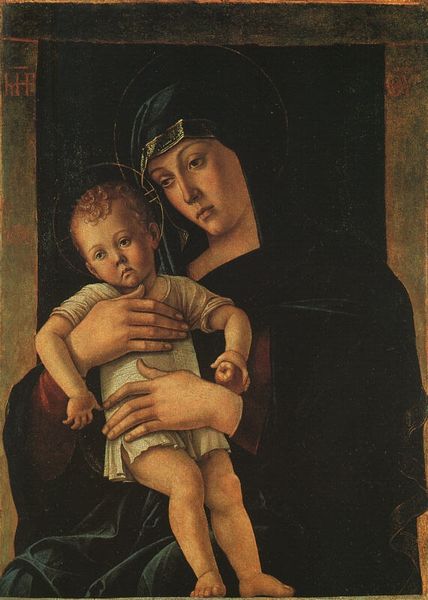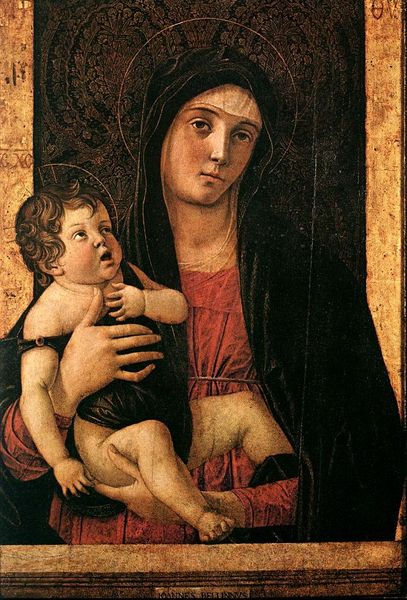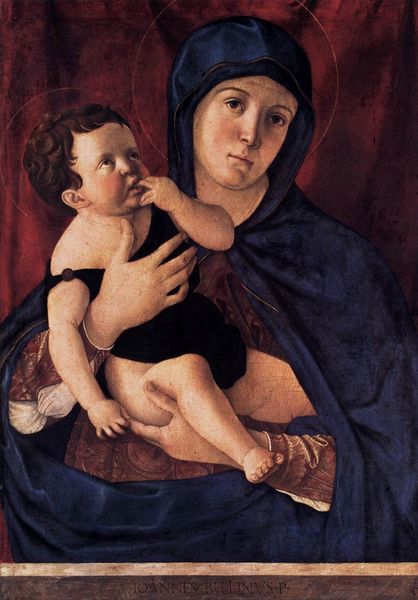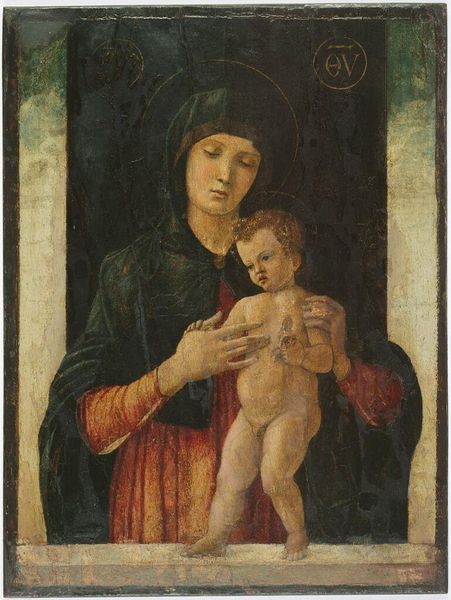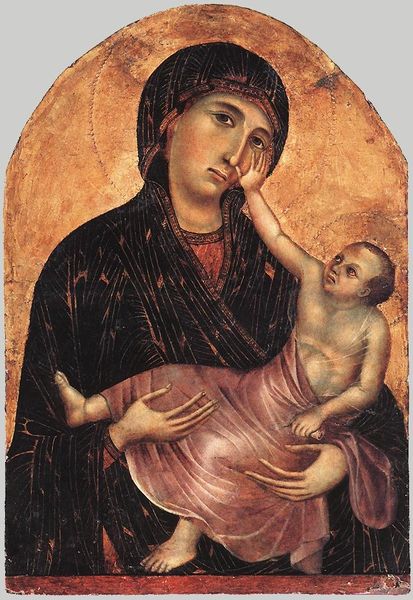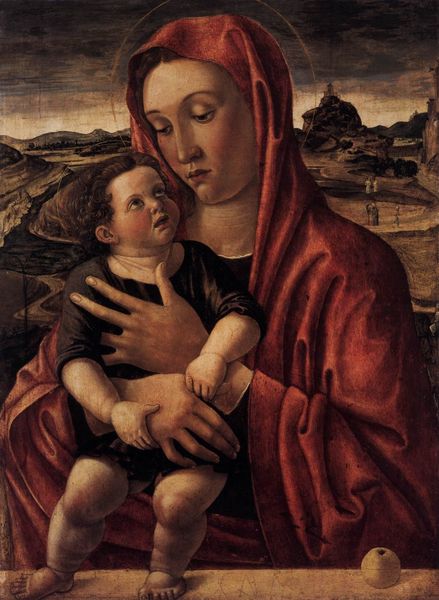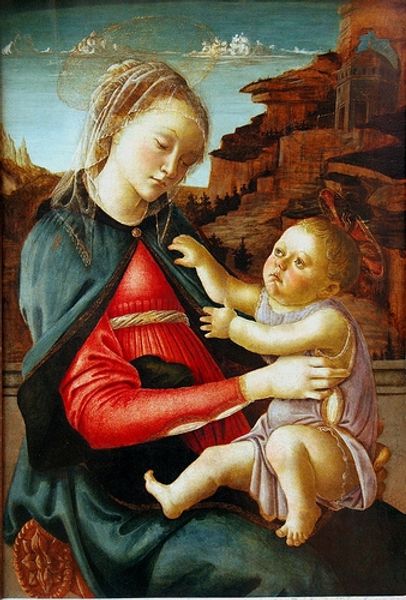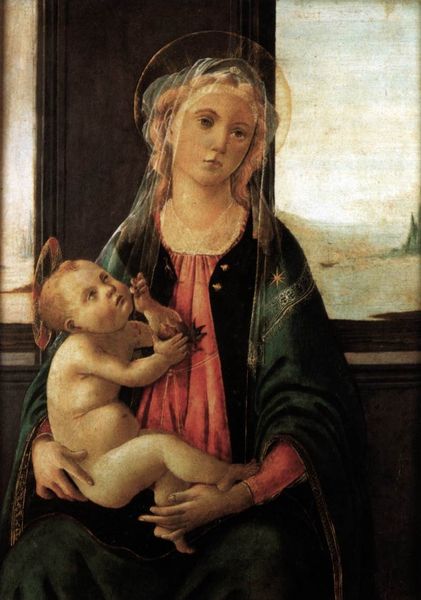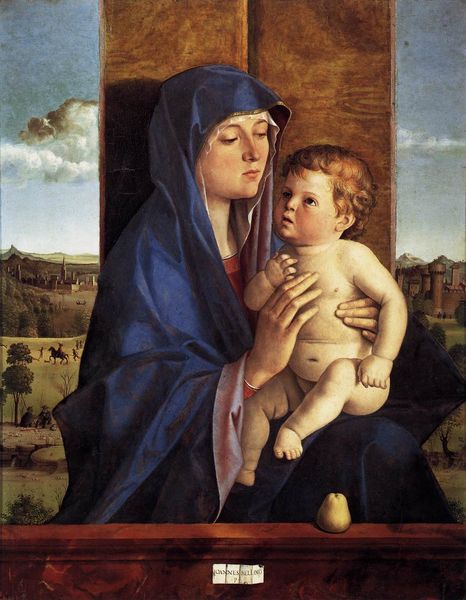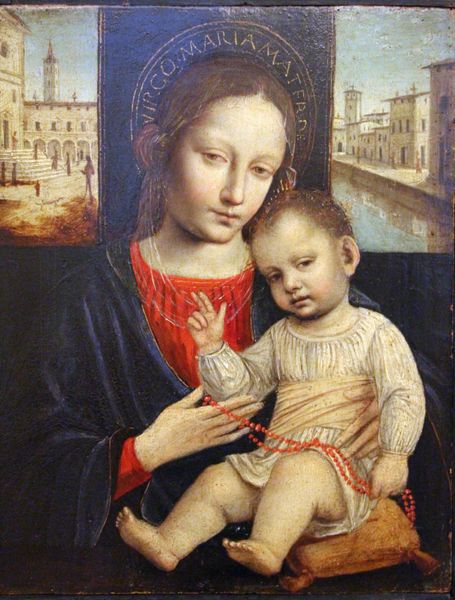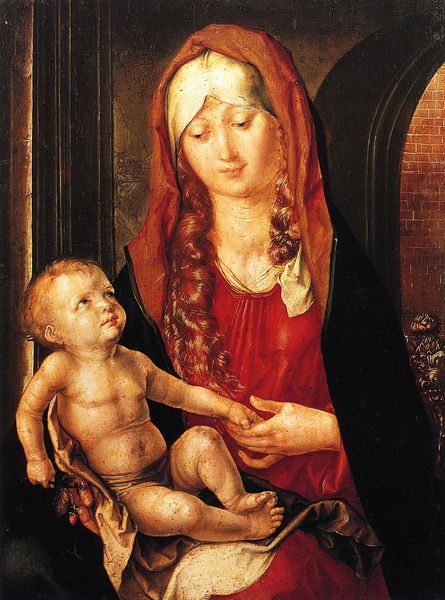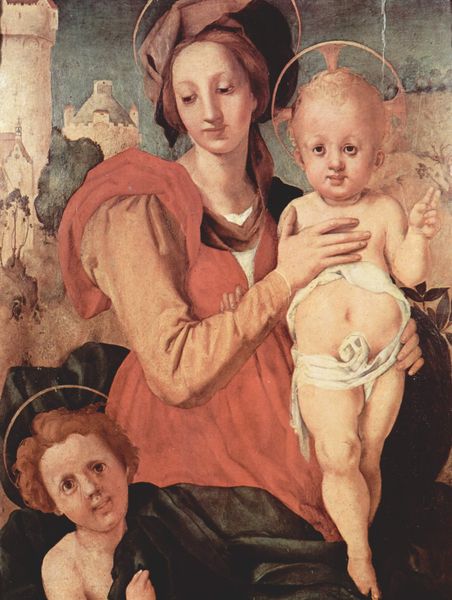
tempera, oil-paint
#
portrait
#
tempera
#
oil-paint
#
madonna
#
oil painting
#
christianity
#
italian-renaissance
#
portrait art
Dimensions: 79 x 63 cm
Copyright: Public domain
Editor: Here we have Giovanni Bellini’s "Madonna with Child Blessing" from 1464, created using tempera and oil paint. There's such an intensity in the figures; the somber mood really comes through, doesn't it? What draws your eye in terms of the composition and the materiality here? Curator: The striking element for me is how Bellini uses light and shadow to create depth and emotional resonance. Note the stark contrast between the almost impenetrable black background and the luminous figures. Bellini uses this tenebrism to amplify the palpable connection between the Madonna and Child. Consider also how the texture of the paint, especially evident in the drapery, imbues the figures with an almost tangible presence. Does the handling of form strike you in any particular way? Editor: I'm intrigued by the contrast in surface textures. Mary's face seems so smooth, almost idealized, compared to the visible brushstrokes defining the child's robe and hair. Is that contrast intentional? Curator: Precisely. This juxtaposition serves to emphasize the dual nature of Christ – divine yet also palpably human. The linear quality, particularly in the folds of Mary’s cloak, adds another layer. Observe how it draws our eyes upwards, guiding us to consider her face. The child's raised hand acts as a counterpoint, a dynamic element breaking the static composition, directing our attention outward, toward the viewer. Editor: That's fascinating. I hadn’t noticed how that hand gestures almost like an invitation. I guess I was too caught up in the seeming formality of the piece. Curator: Exactly. The painting embodies a tension between formal structure and emotive expression, a visual and spiritual paradox inherent in the subject. The composition creates both intimacy and distance simultaneously. Considering these elements together, how does the work now resonate with you? Editor: Thinking about it in terms of light, shadow and that interesting contrast in textures gives me a whole new way of seeing how dynamic a Renaissance painting can be. Thanks!
Comments
No comments
Be the first to comment and join the conversation on the ultimate creative platform.
